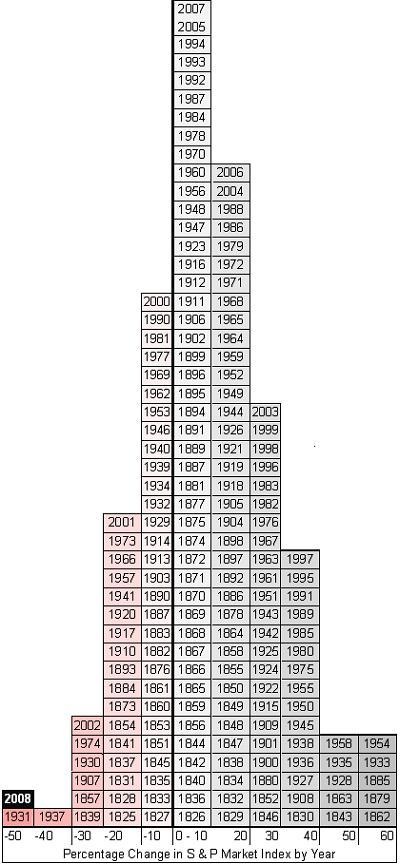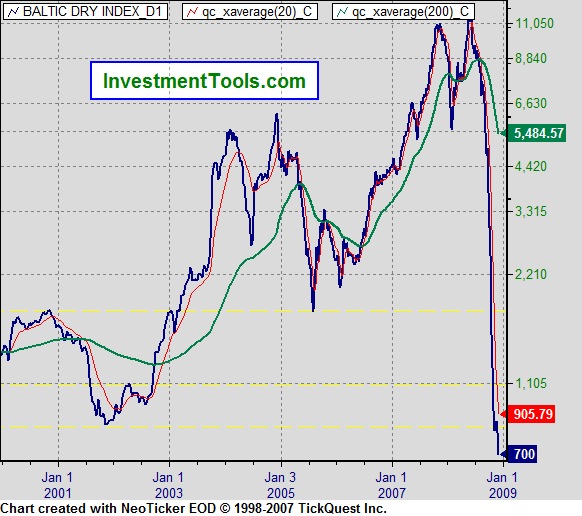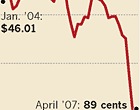Baker says spend — lots.
Dean Baker: Paper Wealth and the Economic Crisis
This backdrop should be kept in mind as Congress considers a stimulus package in the next two months. Congress can and should be considering very large sums for the stimulus package, possibly as much as $600 billion per year.
Spending of this magnitude is needed because that is the amount of demand that must be replaced. With consumption plunging, and housing, non-residential construction, exports and state and local government spending all headed downwards, a large dose of government spending is all that stands between us and long steep downturn. Ideally, this money will address real needs — repairing infrastructure, reducing energy use, extending health care coverage — but the key point is that we need spending, and lots of it.
Those who worry about the deficit and the resulting debt that will be created, and what we are passing on to our children, must think more carefully about sheets of paper. With the stock market plunging by 40 percent, it is now far cheaper for our children and grandchildren to buy the country’s capital stock. In other words, they can expect far better rates of return on money that they invest for retirement and other purposes as a result of the stock market’s plunge.
Similarly, the fall in house prices is great news for our kids. They will be able to get homes for 30 percent, 40 percent, in some areas even 50 percent less than would have been the case without the recent plunge in prices. They should be very happy.
Even the debt itself is not a net burden on our children. Someone must own the debt. In 50 or 60 years, most of us will be gone. The holders of the debt will be our children and grandchildren. While those with an ax to grind, such as cutting Social Security and Medicare, have tried to portray the government debt as redistributing income from future generations of workers to those currently alive and paying taxes, this is absurd on its face.
As a practical matter, our concern must be with the state of the economy. The only way that we can keep employment high, and maintain the infrastructure and investment needed to keep the economy prosperous in the future, is through massive amounts of deficit spending over the next two years.
The debt created by this spending will not be a burden to our children, rather by building a stronger economy we will have hugely benefited our children. The real crime to our children will be if we let misguided concerns about paper debt prevent us from taking the actions needed to pass on to them a healthy economy.
Krugman adds recapitalization and reregulation.
Krugman: What to Do
My guess is that the recapitalization will eventually have to get bigger and broader, and that there will eventually have to be more assertion of government control—in effect, it will come closer to a full temporary nationalization of a significant part of the financial system. Just to be clear, this isn’t a long-term goal, a matter of seizing the economy’s commanding heights: finance should be reprivatized as soon as it’s safe to do so, just as Sweden put banking back in the private sector after its big bailout in the early Nineties. But for now the important thing is to loosen up credit by any means at hand, without getting tied up in ideological knots. Nothing could be worse than failing to do what’s necessary out of fear that acting to save the financial system is somehow “socialist.”
The same goes for another line of approach to resolving the credit crunch: getting the Federal Reserve, temporarily, into the business of lending directly to the nonfinancial sector. The Federal Reserve’s willingness to buy commercial paper is a major step in this direction, but more will probably be necessary.
…
Even if the rescue of the financial system starts to bring credit markets back to life, we’ll still face a global slump that’s gathering momentum. What should be done about that? The answer, almost surely, is good old Keynesian fiscal stimulus.
Now, the United States tried a fiscal stimulus in early 2008; both the Bush administration and congressional Democrats touted it as a plan to “jump-start” the economy. The actual results were, however, disappointing, for two reasons. First, the stimulus was too small, accounting for only about 1 percent of GDP. The next one should be much bigger, say, as much as 4 percent of GDP. Second, most of the money in the first package took the form of tax rebates, many of which were saved rather than spent. The next plan should focus on sustaining and expanding government spending—sustaining it by providing aid to state and local governments, expanding it with spending on roads, bridges, and other forms of infrastructure.
The usual objection to public spending as a form of economic stimulus is that it takes too long to get going—that by the time the boost to demand arrives, the slump is over. That doesn’t seem to be a major worry now, however: it’s very hard to see any quick economic recovery, unless some unexpected new bubble arises to replace the housing bubble. (A headline in the satirical newspaper The Onion captured the problem perfectly: “Recession-Plagued Nation Demands New Bubble to Invest In.”) As long as public spending is pushed along with reasonable speed, it should arrive in plenty of time to help—and it has two great advantages over tax breaks. On one side, the money would actually be spent; on the other, something of value (e.g., bridges that don’t fall down) would be created.
Some readers may object that providing a fiscal stimulus through public works spending is what Japan did in the 1990s—and it is. Even in Japan, however, public spending probably prevented a weak economy from plunging into an actual depression. There are, moreover, reasons to believe that stimulus through public spending would work better in the United States, if done promptly, than it did in Japan. For one thing, we aren’t yet stuck in the trap of deflationary expectations that Japan fell into after years of insufficiently forceful policies. And Japan waited far too long to recapitalize its banking system, a mistake we hopefully won’t repeat.
…
And once the recovery effort is well underway, it will be time to turn to prophylactic measures: reforming the system so that the crisis doesn’t happen again.


